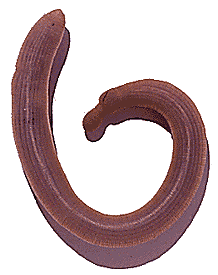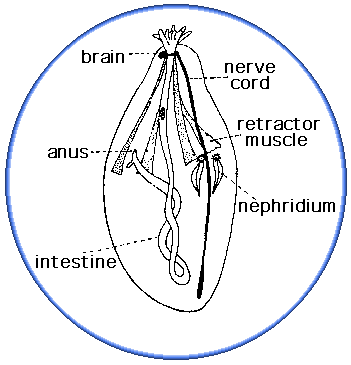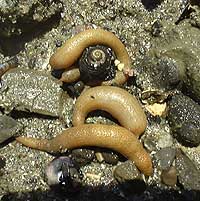
|
Sipunculan Phylogeny and Systematics -- Sipunculans
are sometimes thought to be a group of
annelids,
and have been classified within them. However, this phylogenetic
hypothesis is contradicted by comparing the anatomy of annelids, sipunculans,
and other animals. For instance, sipunculans have no trace of
important annelid characters such
as segmentation and chaetae (bristles). The characters they do share
with annelids (e.g. worm shape, introvert, trochophore larva) are not
restricted to annelids and sipunculans, but are much more general.
An alternative hypothesis places the sipunculans closer to the
molluscs -- the
snails, clams, squids, octopuses, and so on. This seems unusual at first
glance; sipunculans do not look anything like most molluscs, at least
outwardly. However, sipunculans and molluscs share several characters
in early development; for example, after fertilization and division of
eggs, both molluscs and sipunculans have a characteristic arrangement of
cells in the embryo, known as the "molluscan cross."
A third hypothesis considers the characters shared by molluscs and sipunculans
to be primitive characters for a larger group known as the Trochozoa, which also includes the annelids.
|





